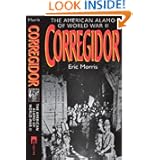Why an Otherwise Pretty Good Oral History Book Leaves A Bad Impression - And What Historical Novelists Can Do To Prevent That
Ned Barnett
In researching my novel on aerial combat in the first year of the Pacific War, I'm currently reading a 1981 book,
Corregidor: The American Alamo of World War II,
by Eric Morris. This book is an oral history of sorts, based on
interviews with dozens of men (and a few women) who were in the
Philippines when Japan attacked. A few of those interviewed escaped,
but most of them had to survive the rigors of Japanese prison camps for
nearly three years.
I imagine that this book - as most
oral histories are - was inspired by Studs Terkel's ground-breaking "The
Good War," a book that "wrote the book" on oral histories of World War
II. To the extent that it was, in fact, inspired by Terkel, that is a
Good Thing, as Terkel's book is well worth reading, studying and
emulating.
The book is eminently enjoyable, and in
many cases truly enlightening, in that it gives the first-person views,
experiences and feelings of the battle for the Philippines, from the air
attacks on December 8, through the surrender of Corregidor the
following May ... and beyond, to include the capture and imprisonment of
those men and women who were left behind by MacArthur and America.
But
the book is, to an historian like me, frustrating. For it has all
kinds of minor factual errors of the kind that Drive Me Nuts. For
instance - the Seversky P-35A fighter aircraft which equipped one
fighter squadron on Luzon. This aircraft had been built for Sweden, but
with war clouds looming, it was commandeered by the US Army Air Corps
and sent to the Philippines. It was a generation out of date as a
fighter, and - what's worse - its instruments were in Swedish, and the
numbers were in meters and kilometers per hour, rather than feet and
miles per hour. It was a very distinctive aircraft, not easily confused
with any other. Except, apparently, by Mr. Morris, who referred to it
as a P-36, a very different aircraft (and the one which largely replaced
the P-35 in US Air Corps service).
Even worse -
anybody could make a numerical error like that, I suppose, but this was a
factual error - he referred to its radial engine as a "rotary" engine -
a type of radial engine used in World War I, but dropped almost as soon
as that war ended when more powerful and modern engines came along.
Later,
in talking about the new, state-of-the-art P-40, he referred to its
Allison in-line engine as a "radial" engine - which was the very
antithesis of the Allison V-12 inline engine. Radials are round, with
cylinders radiating in a circle around a central hub. An inline V
engine is no different than most V-6 or V-8 auto engines (except for
having a dozen cylinders). The difference is between night and day.
Less
obvious, he referred to the volunteer American pilots who were in the
process of traveling to China in the summer of 1941 - going there to
fight the Japanese before World War II - as "Flying Tigers." Those
brave and courageous men eventually became known as the "Flying Tigers,
but that was only after they entered combat - not while traveling to
China. At that time, they were merely the "American Volunteer Group,"
the AVG.
Finally (and I'm not through with the book
yet, so there may be more), he referred to one of the aircraft flying
over the Philippines in the immediate pre-war era as the B-23, a
replacement for (and vast improvement over) the Douglas B-18 Bolo, which
was based on the Douglas DC-2 airliner. In fact, just 38 B-23s were
built, and none of them ever left the continental United States, though
once war started, a few flew anti-submarine patrols off the US coast.
There were, however, a dozen or two of the B-18s assigned to the PI
(most that left the continental US were in Hawaii or the Caribbean,
where they also flew anti-submarine patrols until better planes came
along).
None of these mistakes makes earth-shattering,
and none of them take away from the human interest and essential heroism
of the Americans forced to fight the Japanese with no hope of relief or
salvation (and forced to fight under a delusional Douglas MacArthur who
made some of the most remarkably bad military decisions of his career
in the ten months from July, 1941 through May, 1942).
Still,
these mistakes could have been easily rectified by having the book read
and edited by someone who knew the technology of military history,
rather than just the human element.

